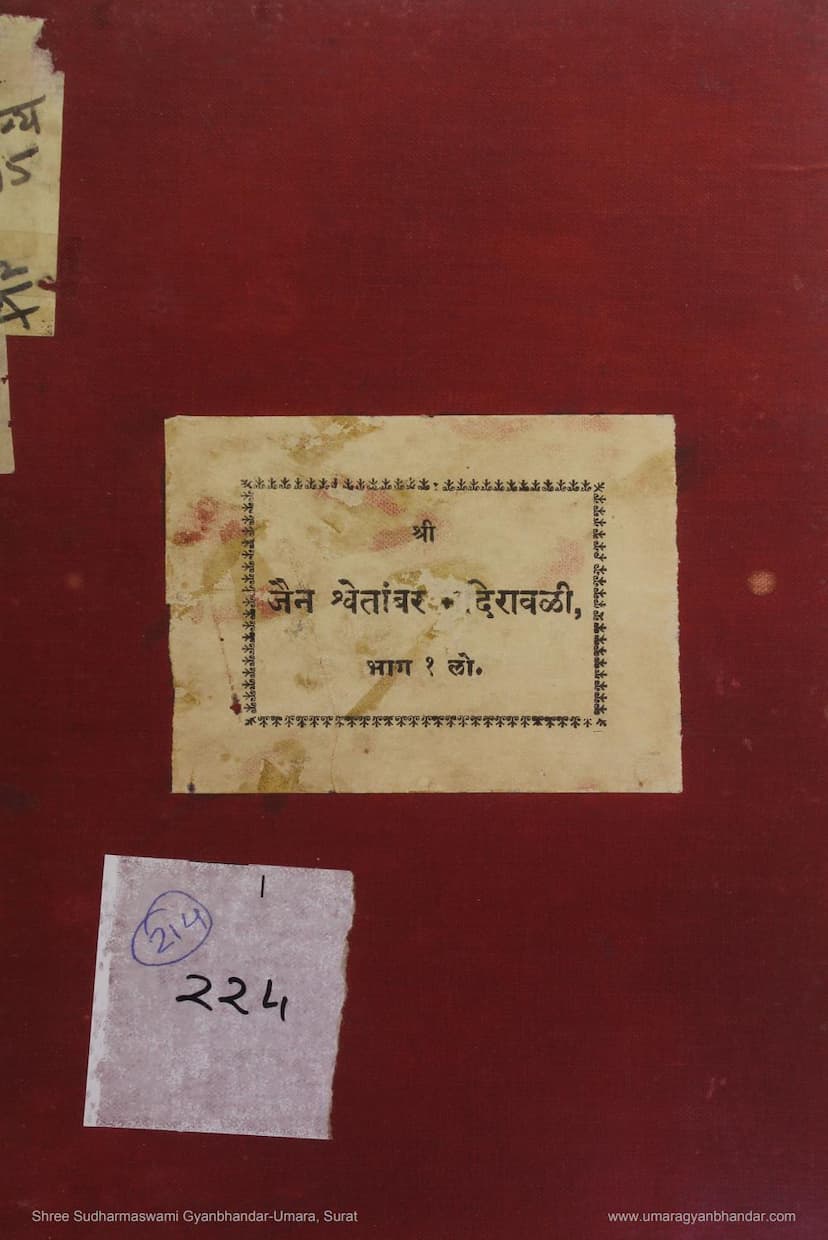Jain Shwetambar Mandiravali
Added to library: September 2, 2025
Loading image...

Summary
This Jain text, "Jain Shwetambar Mandiravali," published by the Jain Shwetambar Conference in 1907 (Vikram Samvat 1963), is a directory of Jain Shwetambar temples located across various regions of India. The book aims to document the factual information related to these temples.
Key aspects and content of the book:
- Publisher and Author: Published by the Jain Shwetambar Conference, Mumbai. The catalog link suggests the "Shree Sudharmaswami Gyanbhandar-Umara, Surat" as a repository, indicating it's a historical Jain religious text.
- Structure: The book is organized geographically, listing temples district by district, and within districts, by taluka (sub-district) and then by village. The initial pages include a preface and an index.
- Content for each Temple: For each temple listed, the directory provides the following information:
- Village Name: The name of the village or town where the temple is located.
- Location/Taluka/District: The administrative division the village falls under, helping to pinpoint its location within a larger region.
- Nearest Station/Major Town: Information about the closest railway station or a significant nearby town for accessibility.
- Construction and Description: Details about the temple's architecture, such as whether it has a shikhar (spire), its type of roof (dhaba-bandhi, gumat), and any significant features.
- Founder/Donor: The name of the person or group (e.g., Shri Sangh, specific merchant families) responsible for building or donating to the temple.
- Deity: The name of the main deity or Tirthankar enshrined in the temple (e.g., Shri Parshvanathji, Shri Adishwarji, Shri Sambhavnathji).
- Image Details: Information about the idols, including the material (stone, metal, silver, gemstones), number of idols, and the year of their installation or construction. It also notes if the images are of "pabala" (footprints) or idols.
- Additional Information (Remarks): This column can contain details like renovations (jinnodhar), miraculous qualities of idols, special festivals, the presence of other religious affiliations, the condition of the temple (jeern, sarari), and if the number of idols is unknown.
- Scope: The directory covers a wide geographical area, including major regions like Gujarat, Kathiawad-Kutch, Marwar, and others. Within Gujarat, it lists temples in various districts such as Ahmedabad, Kheda, Vadodara, Bharuch, Surat, Panchmahals, Palanpur, Mehsana, Kadi, Patan, Vijapur, Sidhpur, and others.
- Preface: The preface indicates that this is the first part of a larger project and the second part will contain more complete information. It acknowledges that due to the urgency of publication for the fifth Jain Shwetambar Conference, there might be inaccuracies and welcomes suggestions for improvement. It also apologizes for any errors in the order of districts, talukas, and villages, as well as in proofreading.
- Purpose: The primary purpose of this directory is to compile a comprehensive record of Jain Shwetambar temples across India, providing valuable historical and architectural information for the Jain community and researchers.
In essence, "Jain Shwetambar Mandiravali" is a significant historical compilation that serves as a detailed gazetteer of Jain Shwetambar religious sites in India at the beginning of the 20th century, documenting their architectural features, founding patrons, and the main deities housed within them.